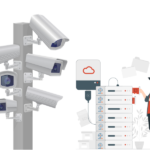The nonprofit organizations are progressively realizing that safety and security threats they face must be handled from a holistic perspective, understanding the impact that an incident can have across the organization.
For sustainability NGO’s shall have policies and protocols aligned to global standards, should prove risk management maturity and competence to all stakeholders, evidence solid ‘duty of care’ to staff, provide a ‘safe harbor’ against litigation, help win new funding by being a ‘safer bet’ to donors and ensure the suitable method is adopted in protecting people and the organization as a whole.
An organization needs to manage a wide range of risks including financial, operational, legal, and reputational risks. Security risk management must be aligned with the organization’s wider approach to risk management together with policies and processes.
Some organizations may have a smaller team or no presence in a country but staff regularly visit the implementing areas; as a result, staff may depend on local partners or host organizations; each with different security practices and risk attitudes. The partner/host organization should be supported in developing security plans, procedures, and preparedness for crises and emergencies. Business disruptions have the same value and impact whether it takes place at the partner’s end or principal organization.
For effective Security Risk Management, organizations must be able to demonstrate that they have identified and considered all foreseeable risks related to a particular location or activity. Assess them regularly, develop and maintain comprehensive mechanisms of mitigation, stay prepared for crises and emergencies. Most importantly, train and develop awareness among staff who must understand their role in managing risks.
Organizations that manage risks effectively will have a better reputation, greater access to funds, greater ability in creating program impact, can offer a safer environment to its participants, while also safeguarding their staff.
One more thing, along with robust and flexible risk mitigation measures, it is adaptive nature and ability to ‘plan on the go’ that enables an organization to sustain and continue operation in the pandemic situation.




